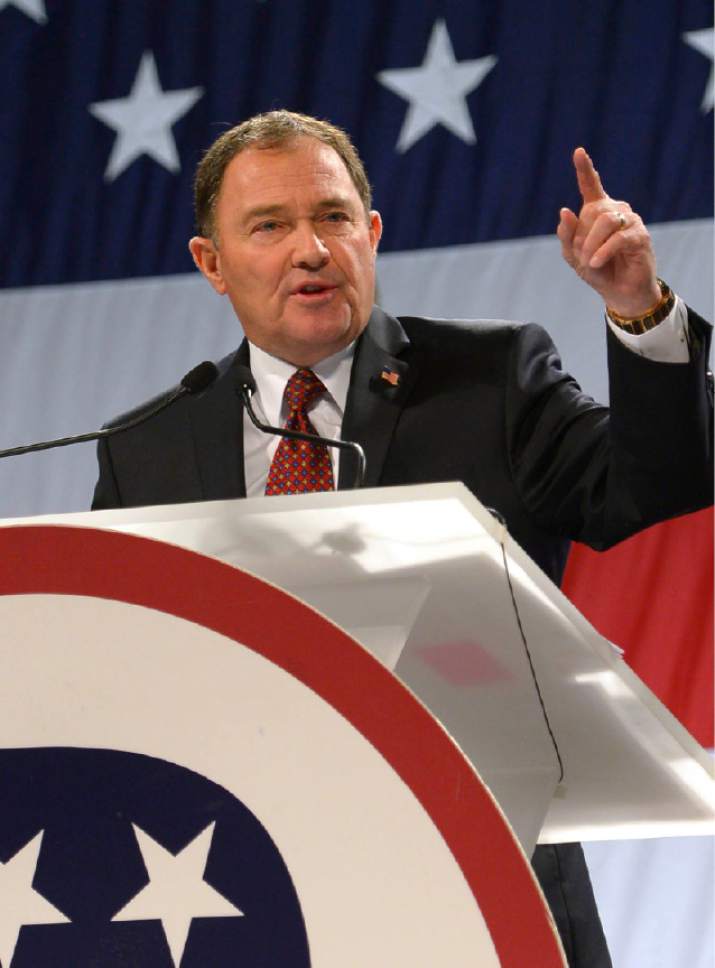This is an archived article that was published on sltrib.com in 2017, and information in the article may be outdated. It is provided only for personal research purposes and may not be reprinted.
If you have followed the news and social media this week, you know the issue of public lands management has once again taken center stage in Utah.
Obviously there are differences of opinion on this matter. But let me be clear about where there is full agreement: Utahns love our exceptional public lands.
We love their grandeur and beauty. We love the opportunities they create for solitude and recreation. We agree that these lands must be protected.
Let there be no mistake. Our criticisms of federal land management and policies should not be interpreted as a critique of the need, value, or merit of public lands. In fact, just the opposite.
In recent days, Utah lawmakers have conveyed to the new administration in Washington our principled concerns about the negative impacts of the most recent use of the Antiquities Act for our state. Correspondingly, leaders in outdoor recreation, whose enterprises rely heavily on well managed and accessible public lands, have raised principled concerns about Utah's commitment to caring for them.
This spirited debate demonstrates both the important role public lands play in the lives of Utahns, and that there are still many unanswered questions about the best way to care for and manage our resources. And because these lands belong to the people, it is appropriate that these concerns ultimately play out through public policy processes established by the people.
Utah's elected officials value our outdoor recreation businesses. They are growing and thriving. They are a vital part of our economy, our identity, and our culture, and have contributed more than $12 billion in direct and indirect economic benefit to our state's economy. Their passionate commitment to preserving and protecting the most stunning landscapes in the world contribute to making Utah the best place to live, work and play.
But as governor, I cannot ignore the challenges Utah sometimes faces due to federal practices that too often ignore meaningful local input. Policies change from administration to administration, creating inconsistent federal lands management practices. There are instances where federal inattention to looters, invasive species and pests has harmed these precious lands.
Over the years, we as a state have done a good job of identifying the problems of federal land management. Perhaps what we have not done as well is to talk about the many positive aspects of public lands.
I will be the first to admit that we can and need to do a better job of letting people know how much Utah values its public lands heritage. We need to talk more about the efforts by state government to promote conservation, access and partnerships with all stakeholders. We need to reiterate clearly that Utah is and always will be a public lands state.
I encourage those who question whether Utah supports its public lands to look at the record.
Look at how the State of Utah and our conservation partners spend nearly $14 million every year protecting, enhancing, and promoting our public lands with the largest active watershed and wildlife habitat restoration program in the United States.
Look at our commitment to 43 state parks, many of which rival the splendor of our national parks.
Look at our creation of the first state office of outdoor recreation in the country, whose primary purpose is to create, preserve, and promote access to our public lands.
Look at our annual three million dollar promotion of Utah's National Parks.
Look at how we actively facilitated access to outdoor recreation opportunities on public land, even amidst a federal government shutdown.
Look at the tens of millions of dollars Utah and its partners spend to improve habitat, eliminate invasive species and improve the range for thriving herds of bighorn sheep, bison, deer, elk and pronghorn.
Look at our efforts to establish conservation easements on private land in sensitive areas under threat of development. The Wilcox Ranch near Nine Mile Canyon is a prime example of this.
Each of these investments has yielded an outdoor experience that is unparalleled in the continental United States, and each shows that we are absolutely committed to the preservation and enhancement of our public land heritage for all.
Yes, there are meaningful differences of opinion about best land management practices and uses. But I believe we can find the optimal balance.
When we face challenging and complex issues and emotions are high, I believe the best way to move forward is to take a deep breath — and in this case maybe two or three deep breaths — then sit down and engage in constructive dialogue.
This latest controversy about Utah's commitment to our public lands is one where rhetoric and posturing from both sides may have outpaced rational thought, productive discussion and civility. We cannot force simplistic solutions to these complex issues through ultimatums, boycotts and press releases.
Consequently, I have invited and will meet as soon as possible with leaders in the outdoor recreation community to listen to their concerns.
When I first became governor, I promised that Utah would discover unlimited opportunities through unprecedented partnerships. I look forward to partnering more closely with our outdoor recreation community in order to discover the best opportunities for the preservation and access to Utah's singular, and singularly important public lands.
Gary R. Herbert is the 17th governor of Utah.



